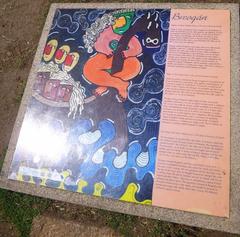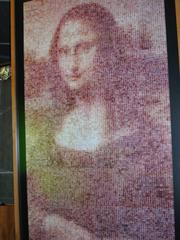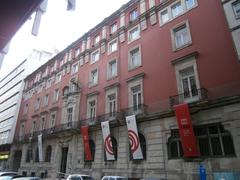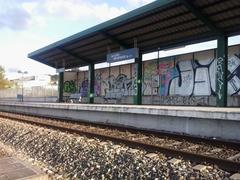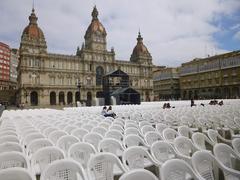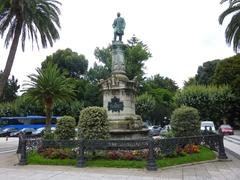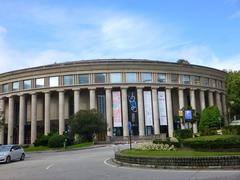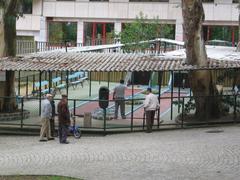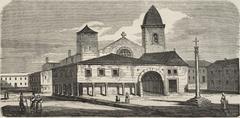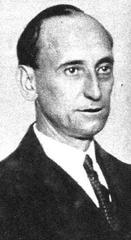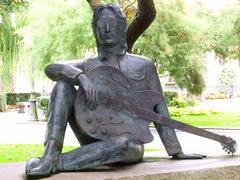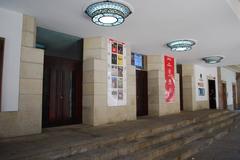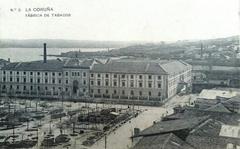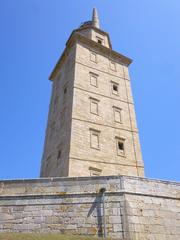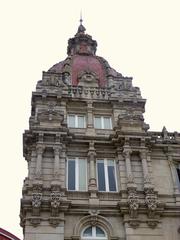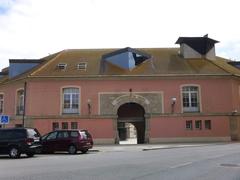Church of San Nicolao da Coruña: Visiting Hours, Tickets, and Historical Significance
Date: 04/07/2025
Introduction
Nestled in the heart of A Coruña’s Old Town, the Church of San Nicolao da Coruña (Iglesia de San Nicolás) stands as a remarkable symbol of the city’s medieval heritage and Atlantic maritime traditions. Dating back to the 12th century, it is one of A Coruña’s oldest parishes and has played a central role in the city’s religious, social, and commercial development. Dedicated to Saint Nicholas, the patron saint of sailors and merchants, the church’s history and architecture reflect the community’s enduring connection with the sea. Today, San Nicolao remains an active place of worship, a hub for local festivals, and a major destination for visitors eager to experience the layered history and cultural vibrancy of A Coruña (es.wikipedia.org).
This guide provides a detailed overview of the Church’s historical evolution, architectural features, cultural significance, and practical visitor information—including opening hours, tickets, accessibility, and travel tips. Whether you are a history enthusiast, architecture lover, or cultural traveler, this article will help you make the most of your visit to this emblematic monument (visitsights.com).
Table of Contents
- Historical Overview
- Architectural Features and Artistic Heritage
- Cultural and Social Significance
- Visiting Information
- Frequently Asked Questions (FAQ)
- Travel Tips
- Conclusion
- References
Historical Overview
Medieval Origins and Early Development
Founded in the 12th century during the Christian consolidation of Galicia, the Church of San Nicolao is among the oldest surviving religious sites in A Coruña, alongside Santa María, Santiago, and San Xurxo (es.wikipedia.org). Its dedication to Saint Nicholas highlights the city’s historical reliance on maritime commerce and navigation. Situated in the Ciudad Vieja (Old Town), San Nicolao quickly became integral to the civic and spiritual life of a growing port community (visitsights.com).
Destruction and Reconstruction: The 1589 English Attack
The church’s resilience is epitomized by its survival and subsequent restoration following the devastating English attack in 1589, led by Sir Francis Drake. The assault severely damaged the building, but local efforts ensured its revival—an event that underscores both the church’s importance and the community’s determination (es.wikipedia.org).
Baroque and Neoclassical Transformations
During the 18th century, San Nicolao underwent significant Baroque-style reconstruction, reflecting renewed prosperity in Galicia. The church acquired a single nave and Latin cross floor plan, with ornate chapels and a dramatic main altar featuring the revered sculpture of the Virgen de los Dolores (engelvoelkers.com). The 19th-century brought a neoclassical facade (completed in 1865), which harmonizes with the Baroque interior and adds an elegant frontage to the historic streetscape (es.wikipedia.org).
Architectural Features and Artistic Heritage
San Nicolao’s architecture traces an arc from its Romanesque beginnings through Baroque and neoclassical transformations. The church is built with robust Galician granite, a practical choice for enduring the Atlantic climate (Wanderlog). Its interior houses a variety of religious artworks, including sculptures and altarpieces from the 18th and 19th centuries, with the Virgen de los Dolores being particularly noteworthy (engelvoelkers.com).
The layout—a single nave with side chapels and a Latin cross plan—supports both worship and community gatherings. Nautical motifs and references to Saint Nicholas are found throughout, emphasizing the city’s maritime identity (visitcoruna.com).
Cultural and Social Significance
Beyond its architectural merit, the Church of San Nicolao has long served as a religious and social center for A Coruña. It hosts major festivals, such as the feast day of Saint Nicholas on December 6th, maritime blessings, and community rites of passage. Historically, the church also supported pilgrims embarking on the Camino Inglés to Santiago de Compostela (turispanish.com). Today, it continues to foster community cohesion and occasionally hosts interfaith and ecumenical events.
Visiting Information
Opening Hours and Tickets
- Hours: Generally open Monday to Saturday, 10:00 AM–1:00 PM and 4:00 PM–7:00 PM. Closed Sundays except for religious services. Hours may vary during festivals or special events (visitcoruna.com).
- Tickets: Entry is free; donations are welcomed to support maintenance and charitable initiatives.
Guided Tours
Guided tours—sometimes in multiple languages—can be arranged through the parish office or local tourist centers. The church is also included in many walking tours of A Coruña’s historical core (Explorial).
Accessibility
The church is generally accessible, with ramps at the main entrance, though some areas may be restricted due to historic architecture. Visitors with reduced mobility are advised to contact the church or tourist office in advance for assistance.
Location and Nearby Attractions
San Nicolao is located in the Ciudad Vieja, close to key landmarks:
- Praza de María Pita: The city’s main square.
- Church of Santiago and Santa María do Campo: Notable Romanesque churches.
- Tower of Hercules: The world’s oldest functioning Roman lighthouse, a UNESCO World Heritage Site (Spain.info).
- Beaches and Shopping: Orzán and Riazor beaches, boutique shops, and Galician restaurants are within walking distance (Spain.info).
Public transport, including bus lines and taxis, connects the area to the train station, airport, and cruise port.
Frequently Asked Questions (FAQ)
Q: What are the visiting hours for the Church of San Nicolao?
A: Monday to Saturday, 10:00 AM–1:00 PM and 4:00 PM–7:00 PM. Closed Sundays except for services. Hours may change during festivals.
Q: Is there an entry fee?
A: No, entry is free. Donations are appreciated.
Q: Are guided tours available?
A: Yes, tours can be arranged via the parish office or local tour operators.
Q: Is the church wheelchair accessible?
A: Main areas are accessible; contact ahead for specific mobility needs.
Q: Can I take photographs inside?
A: Photography may be restricted in certain areas—please observe posted guidelines and respect ongoing services.
Travel Tips
- Plan Ahead: Confirm current opening hours and event schedules before your visit.
- Dress Modestly: Wear attire suitable for a place of worship.
- Be Respectful: Maintain a quiet demeanor, especially during services.
- Explore the Old Town: Combine your visit with nearby historical sites and enjoy local cuisine.
- Evening Visits: The church’s illuminated façade at night is particularly photogenic.
- Accessibility: The Old Town’s cobbled streets can be challenging; comfortable footwear is recommended.
Conclusion
The Church of San Nicolao da Coruña stands as a living monument to the city’s rich past and vibrant community life. From its 12th-century foundation to its role in modern celebrations, it offers a unique lens into A Coruña’s religious, artistic, and maritime heritage. Free to visit and steeped in history, San Nicolao is an essential stop for anyone exploring the city. For up-to-date visitor information and audio-guided tours, consider downloading the Audiala app and checking local tourism resources.
References
- Iglesia de San Nicolás (La Coruña), Wikipedia
- Visiting the Church of San Nicolao in A Coruña, Visit Sights
- Historical Tour La Coruña, Engel & Völkers
- City of A Coruña Tourist Brochure, Visit Coruña
- Church of San Nicolao in A Coruña - Sightseeing Guide, Explorial
- Exploring A Coruña’s Architecture, Wanderlog
- A Coruña: General Tourist Information, Spain.info
- A Coruña: History and Monuments, in-spain.net
- A Coruña: Travel Tips, turispanish.com


